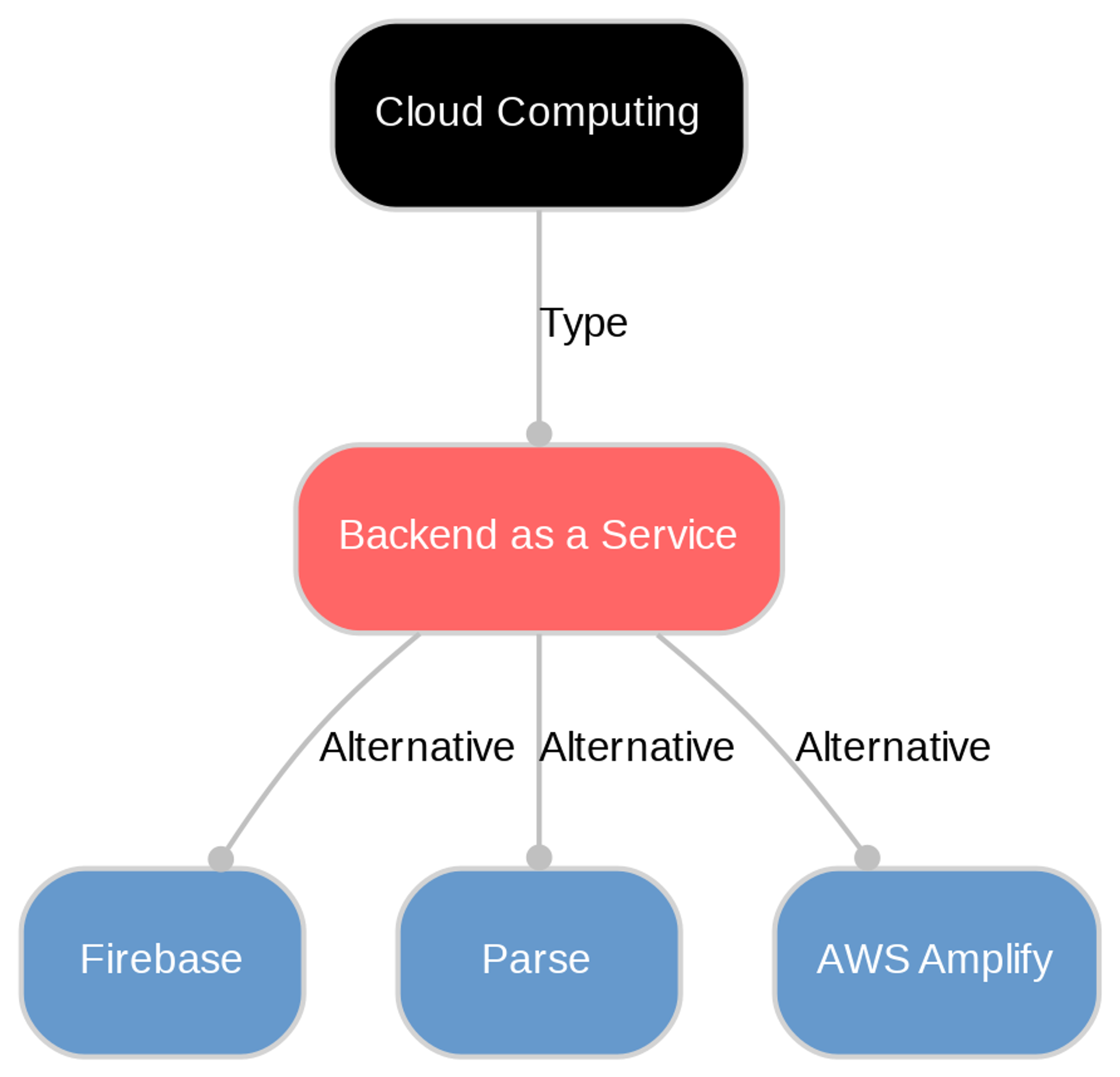What is Backend as a Service?
Backend as a Service, often abbreviated to BaaS, is a cloud computing service model that provides developers with the tools they need to build the backend of web and mobile applications.
Traditionally, creating an app's backend - which includes features such as user management, push notifications and social network integration - could be a time-consuming and complex task. However, BaaS platforms like AWS Amplify or Firebase simplify this process by offering ready-made solutions through Software Development Kits (SDKs) and Application Programming Interfaces (APIs). This not only speeds up the development process but also reduces costs by eliminating the need for developers to individually incorporate various backend services into their apps.
BaaS has distinct advantages over other cloud computing models. It's specifically tailored towards app developers' needs, providing them with an array of features and hosting options. Some providers even offer self-hosted BaaS for more customization flexibility.
How does Backend as a Service work?
Backend as a Service operates in the cloud, providing a framework that automates backend side development. This allows developers to focus on user-facing components of their applications such as design and functionality. The working mechanism involves BaaS products handling basic tasks like user management, data management, and push notifications.
For instance, when an app needs to send push notifications to its users or manage customer data securely, the app sends a request to the BaaS platform. The BaaS provider then fulfills this request without any extra effort from your team - all these processes are automated and managed in real-time by the service provider itself.

BaaS not only increases efficiency but also scalability. As traffic or demand for an application increases, BaaS can automatically scale up resources accordingly while maintaining performance and speed. This kind of flexibility offers significant advantages when it comes to adapting to market trends and user behavior.
Advantages of using Backend as a Service
One of the key advantages of using Backend as a Service is its ability to accelerate the development process. By automating server-side operations, BaaS allows developers to reduce repetitive tasks and focus on core business operations. This can result in faster time-to-market for new applications and features, which is crucial in today's fast-paced digital environment.
Apart from efficiency, BaaS also offers significant cost savings. By outsourcing backend infrastructure management to a service provider, organizations can eliminate the need for large upfront investments in servers and other hardware. This pay-as-you-go model can be particularly beneficial for startups and small businesses with limited resources.
BaaS also simplifies cross-platform development by providing pre-built features that work seamlessly across different devices and operating systems. It enhances application performance while ensuring high levels of security through user authentication protocols and ready-to-use backup procedures.
In addition, BaaS platforms often come with built-in scalability options that allow an application to grow alongside your business without any disruptions or additional development efforts. This makes it easier than ever before for businesses to adapt quickly to changing market demands.
Backend as a Service vs traditional backend development
When choosing between Backend as a Service (BaaS) and traditional backend development, it's important to consider the specific needs of your project. Traditional backend development allows full control over performance, scalability, and cost. This method requires more time and resources but can result in unique, scalable solutions tailored to exact business requirements.
In contrast, BaaS platforms expedite the development process by providing pre-built functionalities for tasks like user management and data storage. While this can greatly reduce costs and speed up time-to-market, it may limit customization and control over certain aspects of the application's backend infrastructure.
Therefore, while startups or projects with tight budgets might benefit from the cost-efficiency of BaaS platforms like Firebase or AWS Amplify; larger organizations or those with complex requirements might prefer investing in custom backend solutions that offer more flexibility in terms of functionality and scalability.
The choice between BaaS and traditional backend development depends on balancing immediate needs such as budget constraints against long-term objectives like sustainability and growth potential.
Explore Sanity Today
Now that you've learned about Backend as a Service, why not start exploring what Sanity has to offer? Dive into our platform and see how it can support your content needs.
Last updated: